In response to movement on a reconciliation package framework that excludes any funding
for child care and early learning, 24 prominent national organizations issued the following
statement calling on Congressional Leaders to reverse course and provide funding to address
America’s ever-worsening child care crisis:
At a moment when Americans are struggling just to get by amid the worst inflation in decades,
the Senate is moving forward with a reconciliation framework that excludes any investment to
address the largest financial burden facing millions of families: child care. America’s early
learning system, which was already failing to meet the needs of families and providers before
the pandemic, is currently being propped up by federal relief funding that will soon expire,
putting the future of our nation’s child care in jeopardy. Any reconciliation package that comes
before Congress for a vote must include significant, sustained funding to prevent the collapse of
our child care and early learning system and make quality care options available and affordable
for more families.
For the past two years, there has been clear acknowledgement from lawmakers and voters
alike that Congress must invest in building a system of early learning and care that meets the
needs of families, young children, and the providers they rely on. President Biden and
Democratic Leaders in the House and Senate touted early learning and care as foundational to
supporting America’s workforce and in turn, our nation's economic recovery and long-term
success, which was backed up by a proposed transformational investment in child care, pre-K,
and Head Start in the Build Back Better Act. It is unimaginable, then, that the Senate would
move forward with a package that does not include a single penny to ensure child care is
available and accessible in every zip code across the country. Women, in particular, will bear the
burden of Congress’s inaction, preventing countless moms from pursuing economic security —
let alone economic success.
Indeed, failure to include child care investments in reconciliation will not only be a missed
opportunity to immediately lower costs for families; it pushes the nation’s early learning system
closer to a catastrophic funding cliff that will affect America’s entire economy, resulting in higher
prices and longer waitlists for families and reduced access to quality care for children, while
lower wages push more early educators out of the field. There is no doubt that lawmakers
understand that the positive impact of investing in early learning and care would be felt for
generations. So too, will the consequences of inaction. As Congressional Leaders turn this
framework into a legislative package, they must add back in a meaningful portion of the original
child care and early learning funding that were eliminated, and come together through any
means possible to provide the substantive investments that are desperately needed.
Organizations: America Forward, Bank Street Education Center, CareForAllChildren, Center for
Law and Social Policy (CLASP), Child Care Aware of America, Council for a Strong America
(CSA), Early Care and Education Consortium (ECE), Early Learning Ventures (ELV),Educare
Learning Network, First Five Years Fund (FFYF), First Focus Campaign for Children, Futures
Without Violence, Imaginable Futures, LEGO Systems, Inc.,Main Street Alliance (MSA),
MomsRising, National Association for the Education of Young Children (NAEYC), National Head
Start Association (NHSA), National Women's Law Center (NWLC), Save the Children, Save the
Children Action Network, Start Early, The Century Foundation, ZERO TO THREE


